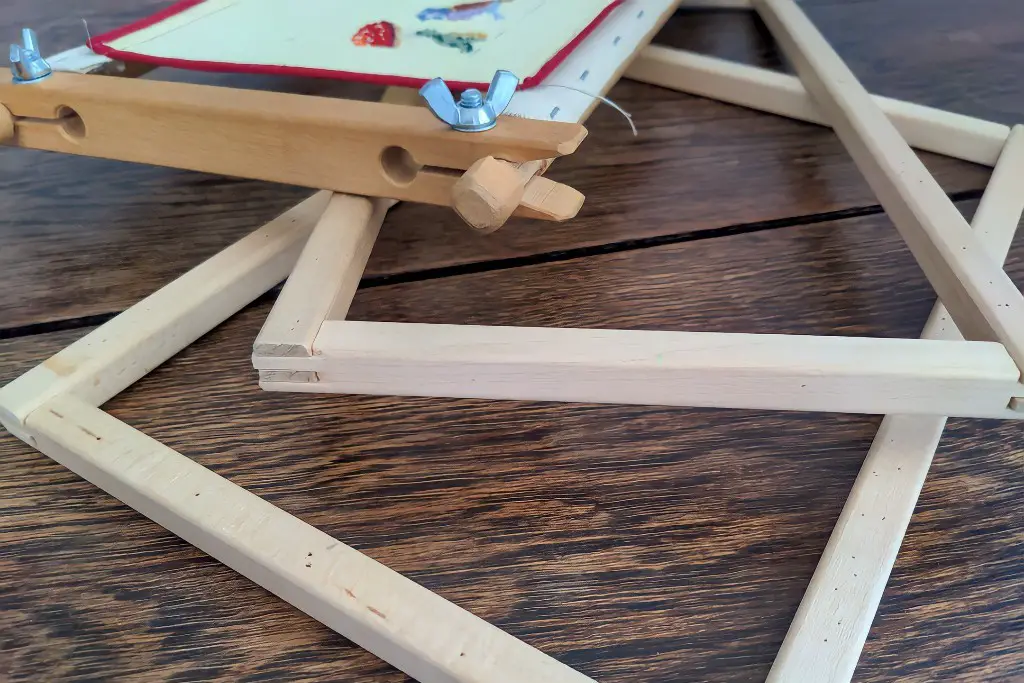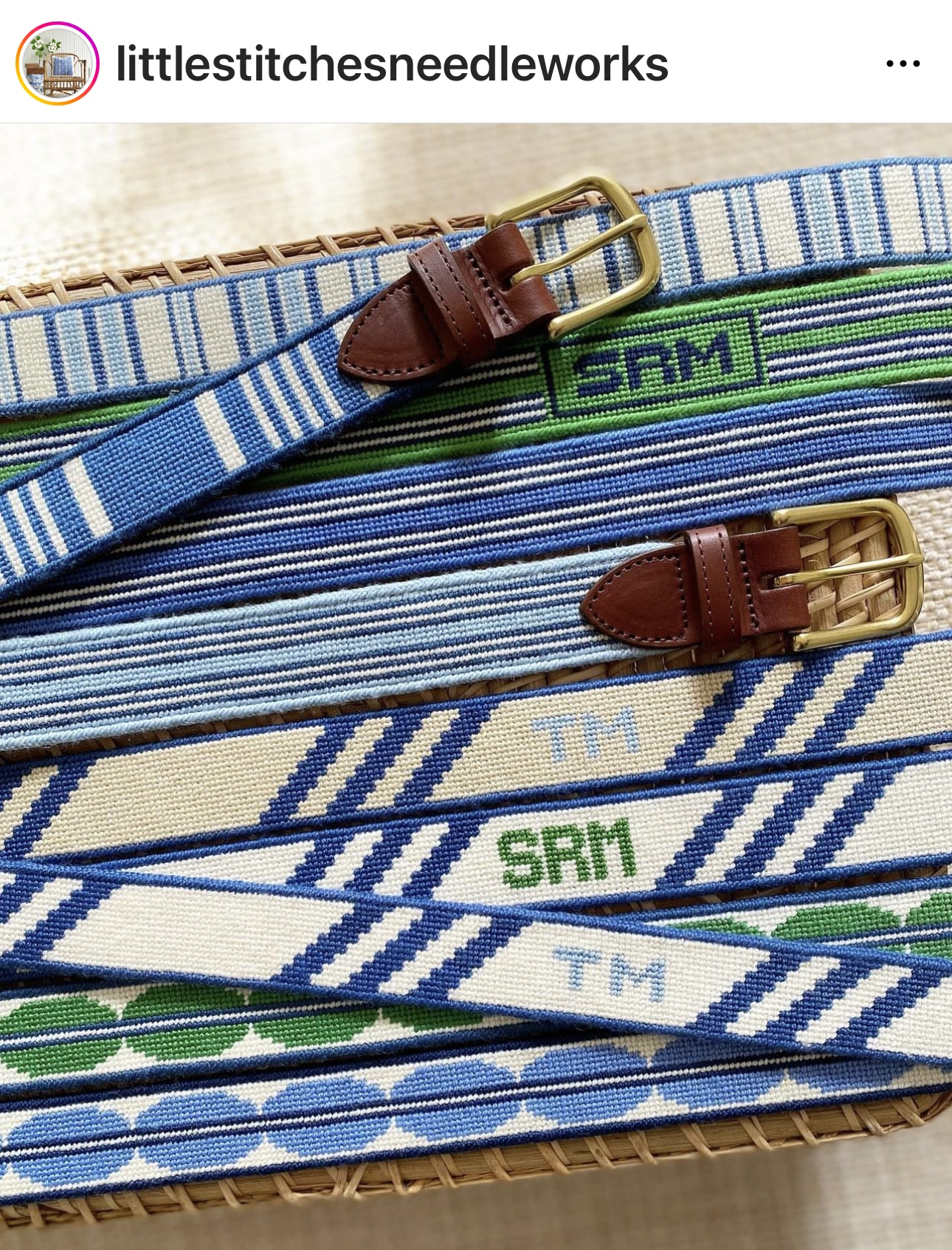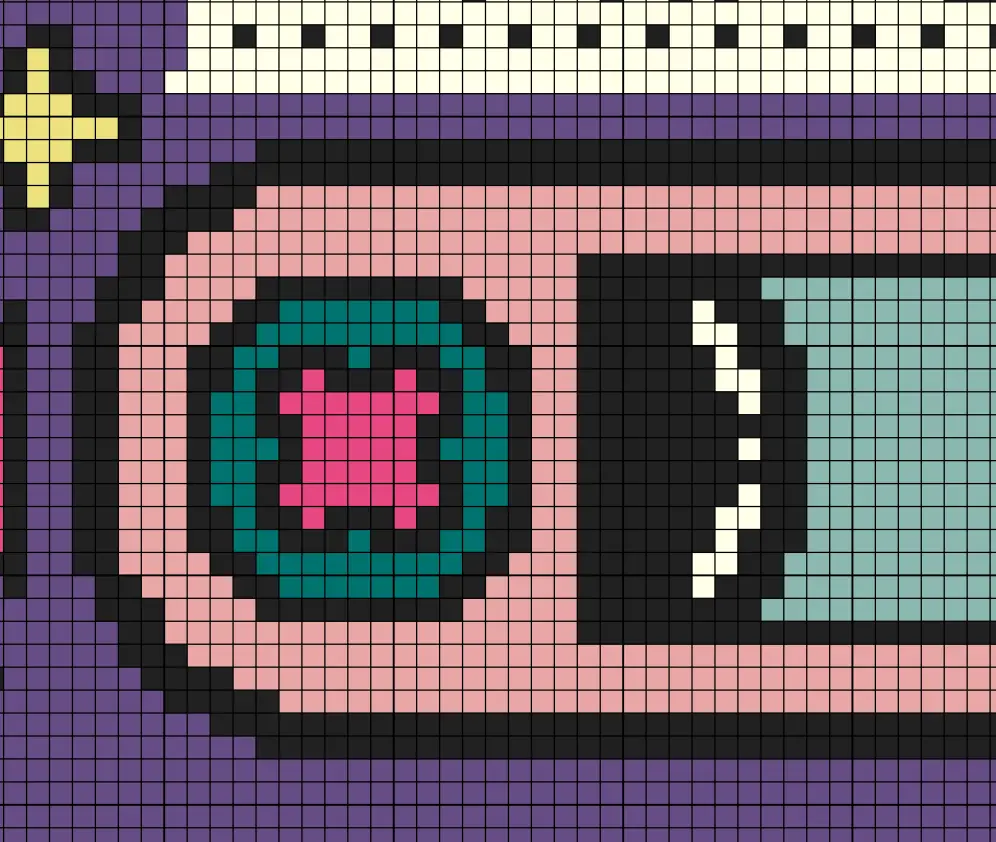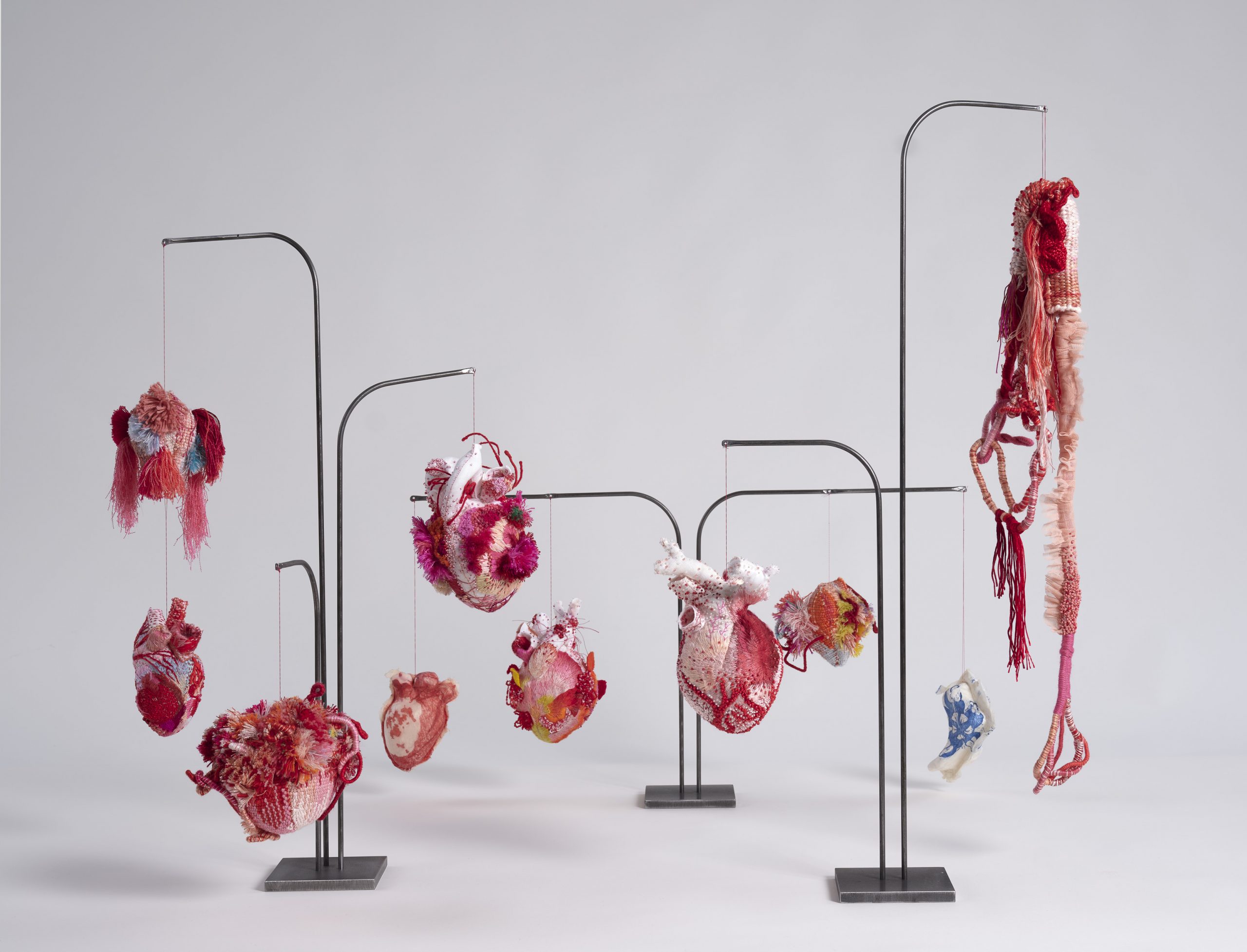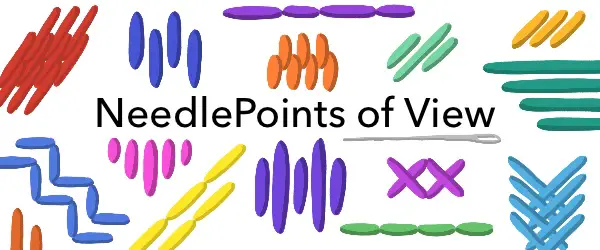
Welcome back to NeedlePoints of View, a monthly column brought to you by Emma of The Maker’s Marks and Hannelore of Hedgehog Needlepoint, where we’ll be sharing our love of all things needlepoint. Whether you’re new to the craft and want to learn what it’s all about or you’ve already fallen under needlepoint’s spell, we hope to inspire you to pick up a needle and get stitching.
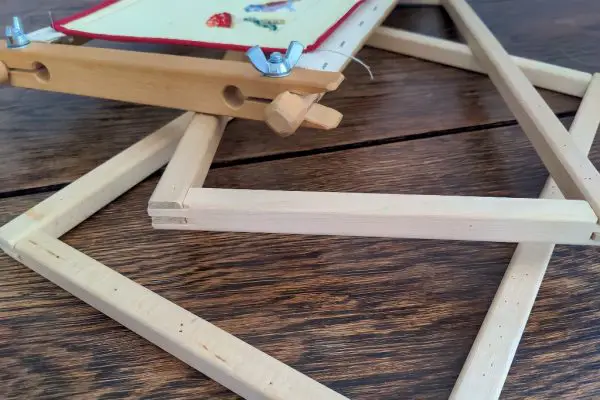
Whether you’re a seasoned needlepointer working on your latest canvas or a new needlepointer working on your first, you may find yourself wishing you had an extra hand if:
You’re experiencing hand fatigue from holding the canvas…
You’d like to try two-handed stitching to increase your speed…
Or, you want to improve your posture as you stitch.
That’s where needlepoint frames and stands come to the rescue!
If you’re a needlepointer who wants to stitch faster or more comfortably for longer, this quick guide will introduce you to the different types of frames and stands on the market.
What kind of frame is best for needlepoint?
A needlepoint frame holds the canvas taut while you stitch, stopping it from distorting as you sew. This means it’ll need less blocking before finishing.
There are lots of different frames to choose from, but the best frames for needlepoint are scroll frames and stretcher bars.
Scroll Frames
Scroll frames work much the way they sound. You attach the top and bottom of the canvas to the roller bars and slot the bars into the extenders to make the frame. You then roll the canvas around the roller bars (like a scroll) until it’s taut.
Traditionally, scroll frames involve basting or machine sewing the needlepoint canvas to the twill tape on the roller bars. As you can imagine, getting the fabric square on the frame can be fiddly.
But there are easier ways to attach the canvas!
- Some stitchers use dressmaking pins to pin the canvas to the twill tape.
- Some roller bars are split in half for you to sandwich the canvas between them.
- Others use hook and loop tape.
Scroll frames come in various sizes, from tiny ones designed for stitching belts to large frames for rugs and upholstery projects.
They’re a great choice when you’re stitching a large canvas. But some needlepointers hate them!
Why, you ask?
If you use specialty stitches and beads they can get crushed when you roll up the canvas and move on to the next section. One solution is to lay felt or towelling on top of the completed areas and roll it into the scroll to cushion the stitches and prevent them from being squished flat.
Also, a scroll frame only holds the canvas taut from the top and the bottom of the canvas, so the sides are loose. Some needlepointers lace the sides to the extender bars or use tension clips to keep an even tension over the whole canvas.
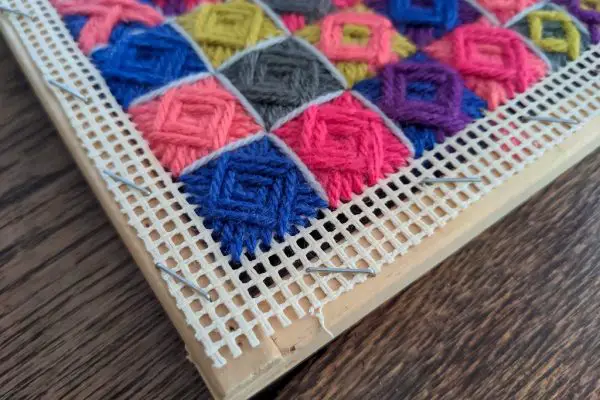
Stretcher Bar Frames
If you prefer your needlepoint canvas tight as a drum, then a stretcher bar frame may be the answer.
These frames are made up of four interconnecting pieces. They usually fit together by hand, but some may require a mallet to secure the four joints in place. I find the last corner is always the toughest. Using thumbtacks or a staple gun, you then stretch your canvas over the frame.
Stretcher bar frames are sold in pairs of different lengths, usually measured in inches. You’ll need two pairs (4 pieces) to make a frame. They’re generally inexpensive, so they’re ideal for those on a tighter budget.
A few things to note before you rush out to buy a stretcher bar frame:
- The stretcher bars need to be smaller than your needlepoint canvas so you can stretch the canvas over the top of the bars.
- If the tension loosens (this can happen from stitching), you’ll need to remove and restretch the canvas over the frame. However, Evertite has incorporated a tightening mechanism into their stretcher bars. It’s very effective, and you won’t have to remove the canvas to adjust the tension, but they are more expensive.
- If you’re working on a big canvas, you may struggle to comfortably stitch it all. You can turn the canvas upside down to reach the top, but don’t forget to turn the stitch guide upside down too. Otherwise, when you turn the canvas back, your stitches may be the wrong way around.
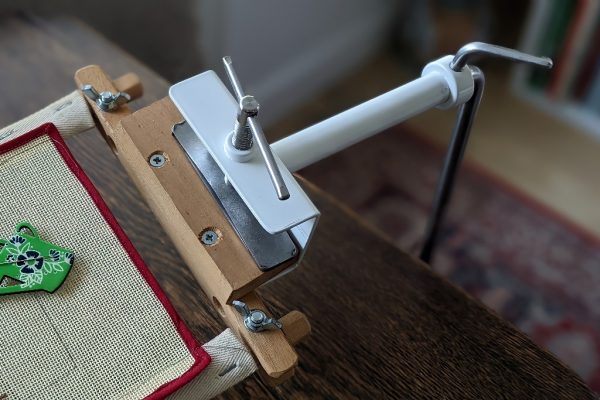
Needlepoint Stands
A needlepoint stand is a helpful third hand, holding your framed canvas while you stitch.
When you use a stand, you can stitch the canvas two-handed (one hand above and one below the canvas), which is a much faster way to work.
Stands are also excellent if you’re experiencing hand fatigue or pain from holding the canvas as you stitch.
A good stand can help improve your posture when paired with the right chair, allowing you to stitch for longer and more comfortably.
The three types of needlework stands are:
Lap Stands
Needlepoint lap stands either balance on top of your lap, or they have a base that’s positioned under your thigh as you sit and stitch.
Floor Stands
Floor stands rest either in front or to your side while you stitch.
Table Clamp Stands
Table clamp stands attach to a table or worktop surface and are the most portable of the bunch.
There are lots of different brands making stands out there but the ones needlepointers champion time and again are (in no particular order):
Needlework System 4
Needlework System 4 is an interchangeable range of stands and accessories made from lightweight aluminium and stainless steel. These durable stands provide excellent value due to their versatile nature and the ability to build the ideal stand for any scenario out of the different components.
K’s Creations
K’s Creations offer a wide range of portable stands made from stainless steel and wood. Needlepointers often praise K’s for their swivelling ball joint that allows for optimal positioning.
Lowery Workstands
Lowery Workstands provide a small range of needlework stands made from aluminum and stainless steel. The stands are lightweight, fully adjustable, and customizable, so you can create the perfect stand for your needs.
Choosing the right needlepoint frames and stands for you
Which frame and stand suits you best depends on your needs, where you stitch, and your budget. Many local needlepoint shops carry a variety of stands, and some even loan them out to help you figure out which one’s best for you.
I love using stretcher bars for smaller projects and scroll frames for larger canvases. I pair both with a Lowery Workstand. The Lowery was the right choice for me because it’s compact, the levers are kind on my hands, and the extra long L bar allows me to stitch wherever I’m sitting.
I hope this quick guide to the best needlepoint frames and stands helps you fight hand fatigue and lets you stitch for longer!
Next time Emma will introduce you to a fantastic group of stitchers who meet regularly to needlepoint and natter. She’ll also let you know how to find your local stitch club or set one up.

